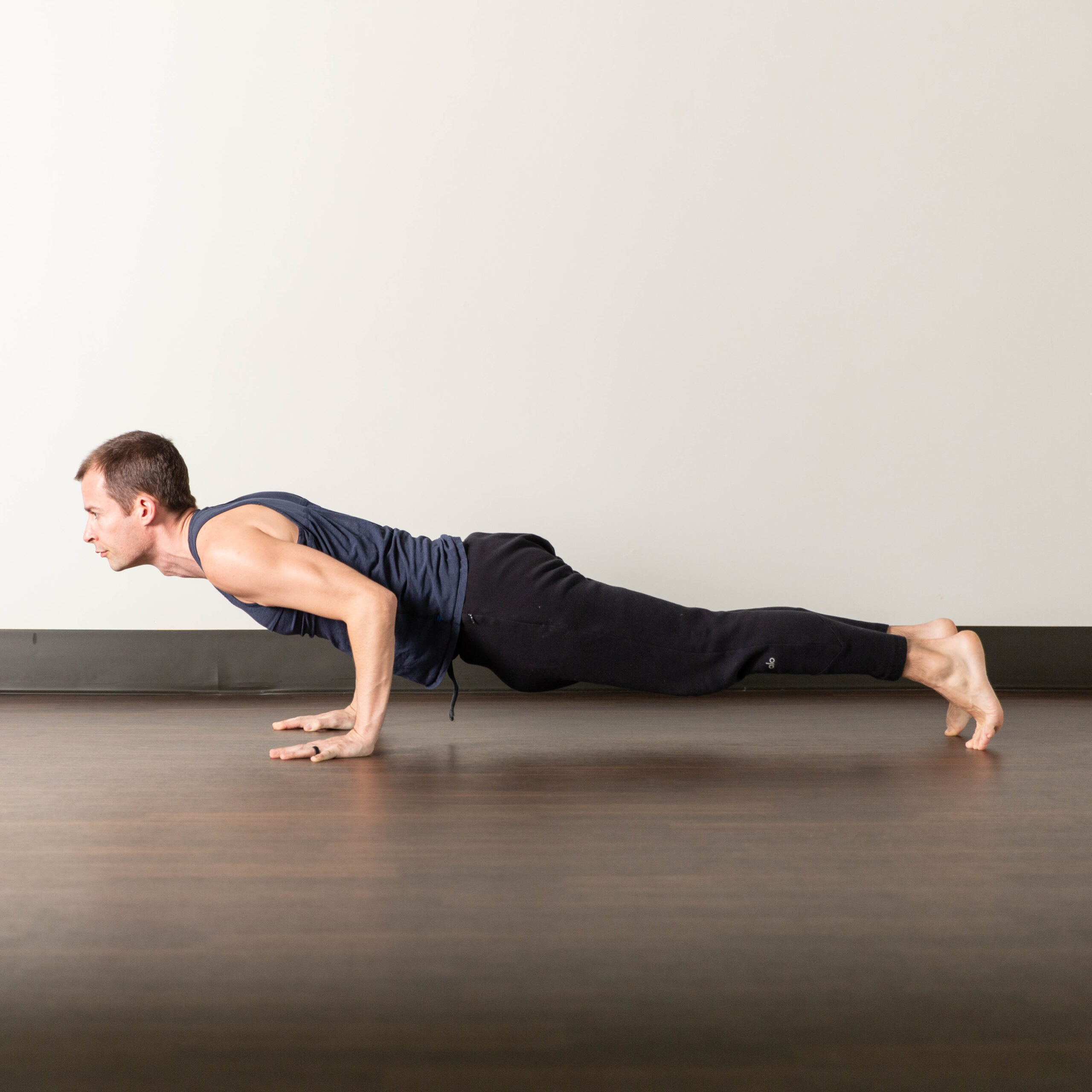
by Tate Englund
In this week’s newsletter, we’re looking into the nuances of hand placement in Chaturanga and what really matters. If you’ve spent any time with me, you know I like to find the why, I like to push boundaries, and I like to challenge ways of thinking. I think it’s absolutely essential to question long-held postural beliefs in yoga to continually improve and make this physical practice better. It’s a practice of self-inquiry for crying out loud. How can we not 🤷♂️.
Before we go further, if you don’t feel like reading, here’s the video:
We were once taught not to engage our glutes and hamstrings in back bends because this will compress the low back. Complete nonsense. You know what compresses the low back….GOING TOO FAR. Hopefully, you know by now that we want the glutes and hamstrings to fire. That’s what they’re there for.
Similarly, let’s explore and challenge some of the common instructions for Chaturanga.
What we’re usually told: Place your hands directly under your shoulders with elbows close to your body. Don’t go lower than half way. This will save your shoulder.
Tate’s issue with this: #1 that 100% won’t protect your shoulder. I can guarantee you that. Also, these cues can limit our ability to engage key muscles like the pec major and other adductors, essential for shoulder stability and strength which would actually help protect the shoulder long-term.
What really matters in Chaturanga: It’s not about elbows at your sides, or wrists under shoulders, or lowering no more than half way. That bleep really doesn’t matter. It’s about having the ability to fire the adductors more, getting the chest involved and using the back of the shoulder muscles. A true 360° experience and support for the shoulder.
Why taking the hands wider might be beneficial: Placing your hands a bit wider allows for easier engagement of your chest, shoulder adductors, and back muscles, offering more comprehensive shoulder support and strength. It’s honestly a much more powerful position. Look at someone doing a bench press. The hands are always a bit wider, unless they are specifically trying to target specific areas. Not to “save their shoulders”.
How to put this new knowledge into practice:
Hand Placement: Your hands can be wider than your mat, even with a few fingers sometimes off the mat, to engage muscles more effectively.
Elbow Position: Don’t worry about this. Instead, focus on the adduction of the upper arm back in, rather than just pinning your elbows to your side. This is what is really important. Not about elbows in. Picture squeezing rolled towels between your upper arms and rib cage to activate those shoulder and chest muscles effectively.
In a nutshell: By adjusting your hand placement in Chaturanga to be slightly wider, you may create a more powerful, stable, and integrated shoulder engagement. This tweak can help you build true strength and stability, steering clear of the pitfalls of the traditional, narrower hand placement.
As always, don’t take my word for it. Try it out, many times. Make adjustments. Make it work for you. Inquire on your mat to make the posture fit you, rather than what you’ve been told.
Again, here’s the video.
Let me know if it worked for you, or if you think I’m crazy. Probably both.
Talk soon,
Tate

